
1878-1879. Canvas, oil. 179.7 x 300.4. The Tretyakov Gallery, Moscow, Russia.
Vereshchagin set out to show the society a truthful picture of the war, to reveal its true appearance. But to create truthful pictures on this subject, in his opinion, it was possible only when the artist would see the war in reality, not being afraid to risk his life, his blood. And when the Russian-Turkish war of 1877-1878 broke out, Vereshchagin hurried to the theater of military operations. Here, voluntarily, being exposed to great danger, participating in a number of skirmishes and battles, he amazed everyone with energy, tirelessness and courage. Under strong enemy fire he wrote etudes, made sketches in a marching album.
In one of the battles he was wounded, lay for a long time in the hospital and almost died. The close acquaintance with the war, its careful study allowed Vereshchagin to create new pictures about the war. And in a new series of works he described the war as a dramatic event of the people’s life, and not as a parade. In his paintings, he portrayed ordinary people, dressed in soldiers’ overcoats, showed the boundless heroism and courage of a Russian soldier.
A number of paintings Vereshchagin dedicates to events related to the storming of Plevna: “Attack”, “After the attack.” The paintings “Winners”, “Defeated”, “Panikhida” are devoted to the battle of Telish – here, through the fault of “the highest individuals”, almost a whole regiment of huntsmen was destroyed.
War in Vereshchagin appeared in all its reality. Characteristic in this respect are the paintings “Shipka-Sheinovo”, “Defeated., Requiem”, “After the attack.”
“There are no victorious noisy banners, no glittering bayonets, no brilliant squadrons rushing to the batteries burning in the fire, there are no ceremonial processions, trophies, keys, etc., in the pictures. All that enchanting, fascinating atmosphere that mankind has devised to cover the most pernicious of their deeds, alien to the brush of Mr. Vereshchagin, before you naked reality. “
In the paintings on the Russian-Turkish war, the skill of Vereshchagin grew and developed even more. Keeping the precise drawing, clear interpretation of the form, sonorous colors, the artist achieves in the pictures of more, than before, tonal unity; his painting becomes wider and free. In the paintings there is no excessive attention to all details and details, which was observed in a number of early paintings. The composition is simple and natural and devoid of any kind of conventionality and deliberateness.
In the “Balkan” series, the artist throws a direct challenge to the official pan-Slavic propaganda, recalling the fatal miscalculations of the command and the terrible price that the Russians paid for the liberation of the Bulgarians from the Ottoman yoke. Particularly impressive is the canvas “Defeated, Panikhida”, where under the cloudy sky a whole field of soldiers’ corpses are strewn, sprinkled with only a thin layer of earth.
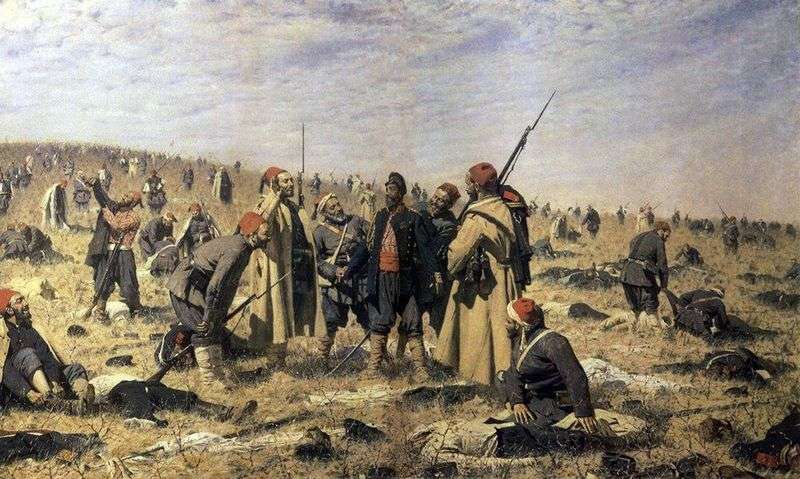 Winners by Vasily Vereshchagin
Winners by Vasily Vereshchagin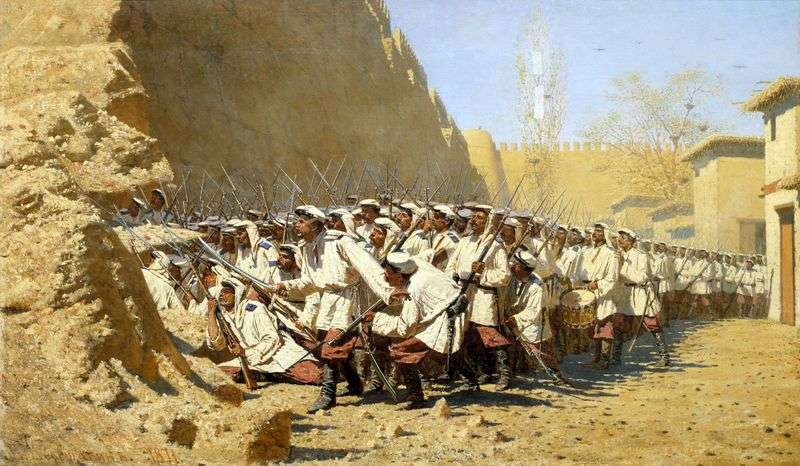 At the fortress wall. Let them come in by Vasily Vereshchagin
At the fortress wall. Let them come in by Vasily Vereshchagin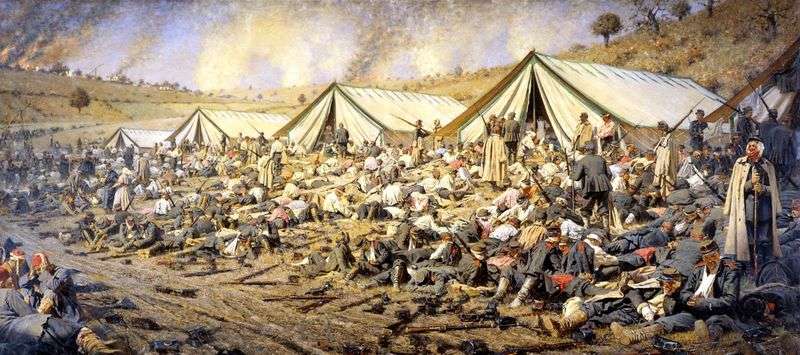 After the attack. Dressing station near Plevna by Vasily Vereshchagin
After the attack. Dressing station near Plevna by Vasily Vereshchagin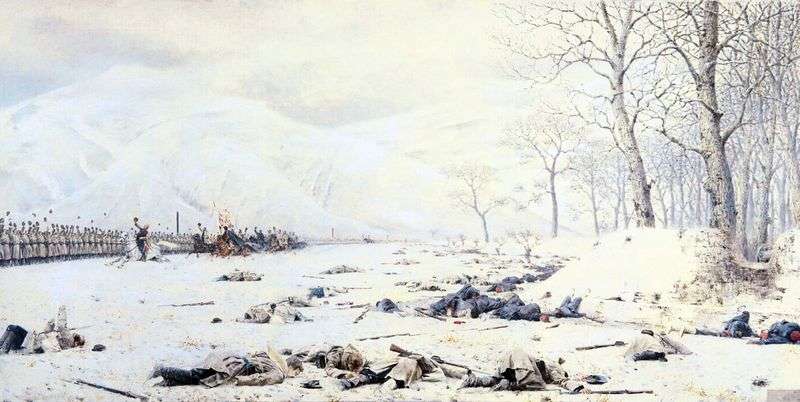 Shipka-Sheinovo. Skobelev under Shipka by Vasily Vereshchagin
Shipka-Sheinovo. Skobelev under Shipka by Vasily Vereshchagin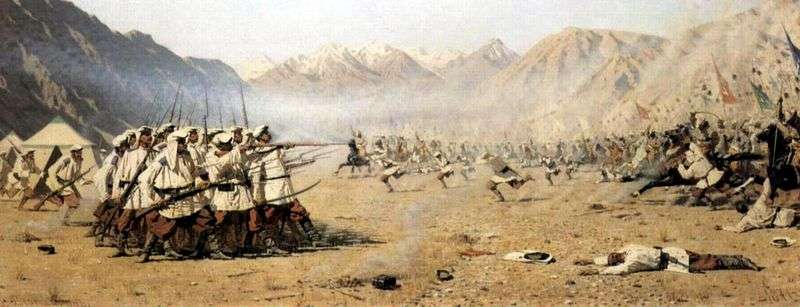 They attack unawares by Vasily Vereshchagin
They attack unawares by Vasily Vereshchagin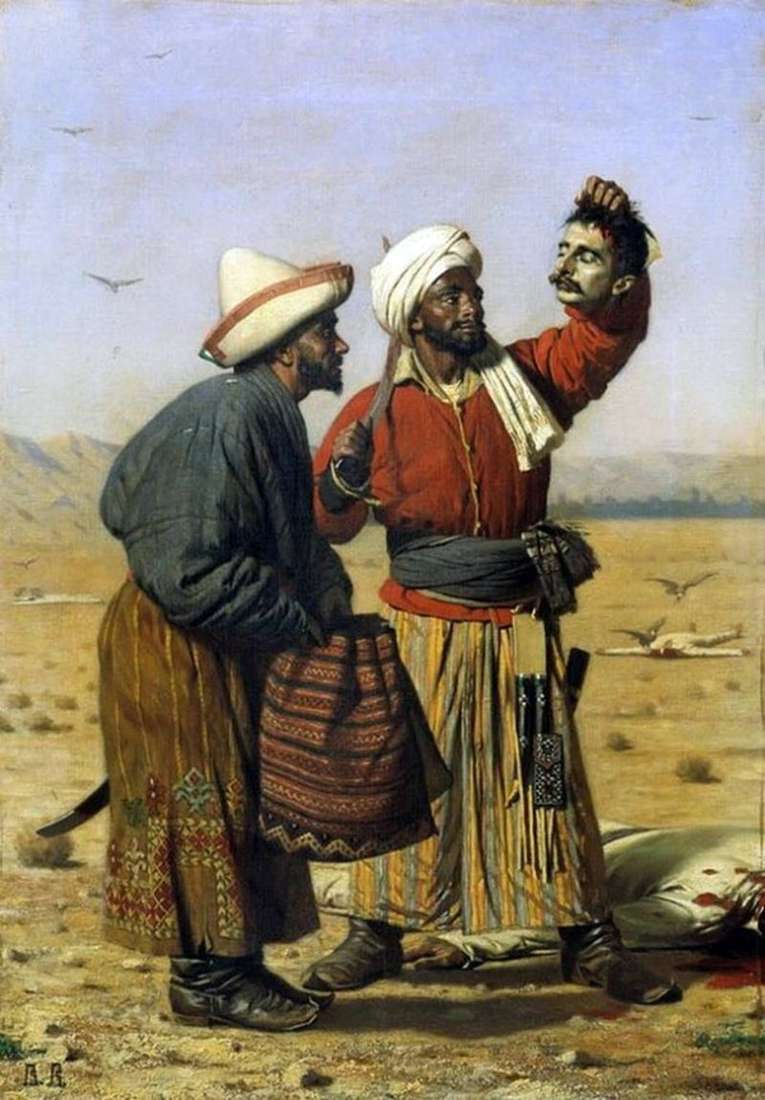 After good luck by Vasily Vereshchagin
After good luck by Vasily Vereshchagin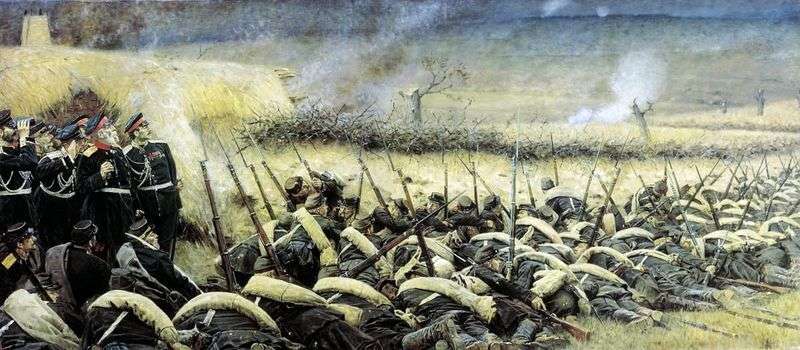 Before the attack. Under Plevna by Vasily Vereshchagin
Before the attack. Under Plevna by Vasily Vereshchagin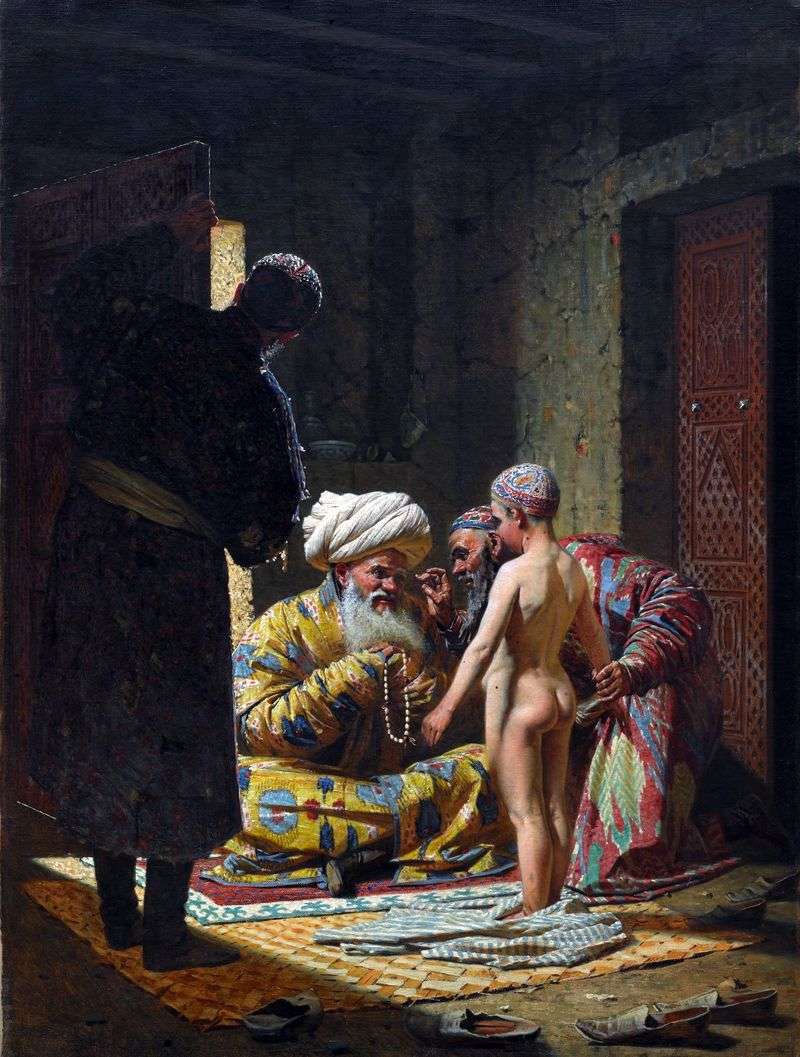 Sale of the child-slave by Vasily Vereshchagin
Sale of the child-slave by Vasily Vereshchagin